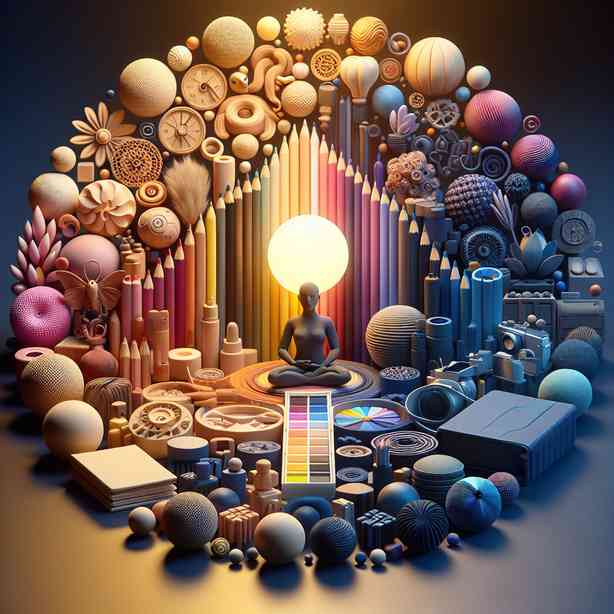
Color has a profound impact on our emotions, behaviors, and perceptions. There is often that one color that resonates deeply with us for various reasons, a hue that continuously draws us back throughout our lives. This phenomenon can be attributed to a combination of cultural influences, personal experiences, and even psychological effects associated with color. As we delve into the significance of that one color we keep coming back to, we will explore its meanings, psychological implications, and how it shapes our lives.
To better understand this connection to color, one must first consider the vast spectrum of colors and their cultural significance. For instance, red often symbolizes passion and energy, while blue is frequently associated with calmness and serenity. The color green, on the other hand, typically invokes feelings of nature, growth, and harmony. Each color has a unique set of psychological connotations and is employed in various contexts, from branding to interior design, as each color evokes different feelings and responses in individuals.
Imagine a person who continually finds themselves gravitating toward the color blue. This attraction could stem from personal experiences, such as cherished memories associated with the ocean or sky. The tranquility of a calm sea or the vastness of a clear sky often evoke feelings of peace and security. These emotional responses to color can be powerful and can influence decision-making, mood, and even personal style.
Moreover, cultural backgrounds also play a significant role in our color preferences. In many Western cultures, blue represents trust, loyalty, and reliability, which is why it is a popular choice for corporate branding. Meanwhile, in Eastern cultures, blue can embody different meanings, such as protection and strength. Exploring our affinity for a specific color can reveal insights not just into our tastes but also into our identities and values shaped by our cultural contexts.
A fascinating aspect of color psychology is how it can create a sense of belonging and identity. For someone who has faced challenges or traumas, a certain color might evoke feelings of safety and comfort. For example, if green has been a prominent color in someone’s life, symbolizing regeneration and healing, returning to that color might serve as a reminder of personal growth and new beginnings. This relationship extends beyond mere aesthetics; it connects deeply to our subconscious and personal history.
Have you ever noticed how certain colors come to life in different environments? The same shade can take on varied meanings and emotions depending on the context in which it is presented. A vibrant orange can invigorate a room and inspire creativity when used in an art studio, while the same shade may feel overwhelming when featured in a more intimate setting. This variability illustrates the dynamic role of color in our environments, affecting how we feel and interact with the space around us.
Furthermore, the colors we choose to surround ourselves with in our clothing can reflect our personalities and how we wish to present ourselves to the world. Choosing that one particular color consistently—perhaps a shade of purple known for its royal and aspirational qualities—might indicate a desire to exude confidence and creativity. Fashion is deeply intertwined with color choice, allowing individuals to express their unique identities and moods through their clothing.
Color is not only pivotal for personal style; it also significantly influences marketing and consumer behaviors in the business realm. Companies invest considerable resources in color psychology to evoke specific emotions and reactions from their audience. For instance, fast-food chains commonly use red and yellow to stimulate appetite and create a sense of urgency. In contrast, high-end brands often opt for black or gold to convey luxury and exclusivity. Understanding the colors that attract consumers can enhance marketing strategies and drive sales.
The significance of colors extends into the realm of mental health and personal well-being as well. Therapeutic approaches sometimes incorporate color as a form of expression in therapies like art and color therapy. Participants may be encouraged to use colors that resonate with them as a way of processing emotions and experiences. This connection between color and mental health illustrates how deeply intertwined our emotional states are with the visual stimuli we encounter every day.
As we move towards the future, the increasing focus on wellness, mindfulness, and self-care emphasizes the importance of creating environments that reflect our personal color preferences. Whether it’s painting a room in our house or choosing artwork that resonates with us, surrounding ourselves with colors that uplift and inspire us can significantly impact our quality of life. It encourages us to be intentional about our color choices, promoting a positive atmosphere conducive to well-being.
In conclusion, the one color we keep returning to often serves as a reflection of our deeply held values, emotions, and experiences. This connection is not merely superficial; it resonates with the layers of our identity shaped by psychology and culture. Understanding our affinity for this specific color allows us to explore our innermost feelings, bringing us closer to a sense of self-awareness and authenticity. The richness of color can lead us to reflective and transformative experiences, ultimately enhancing our lives and helping us navigate our personal journeys.
Whether through fashion, home decor, branding, or art, our interactions with color are a powerful testament to our individuality and humanity. Recognizing and embracing that one color can lead us to a deeper understanding of not only ourselves but also our connections to the world around us. Now, take a moment to reflect on that one color you keep coming back to—what does it mean for you, and how does it shape your life? Discovering the answers to these questions can open up new horizons for personal growth and emotional healing.


